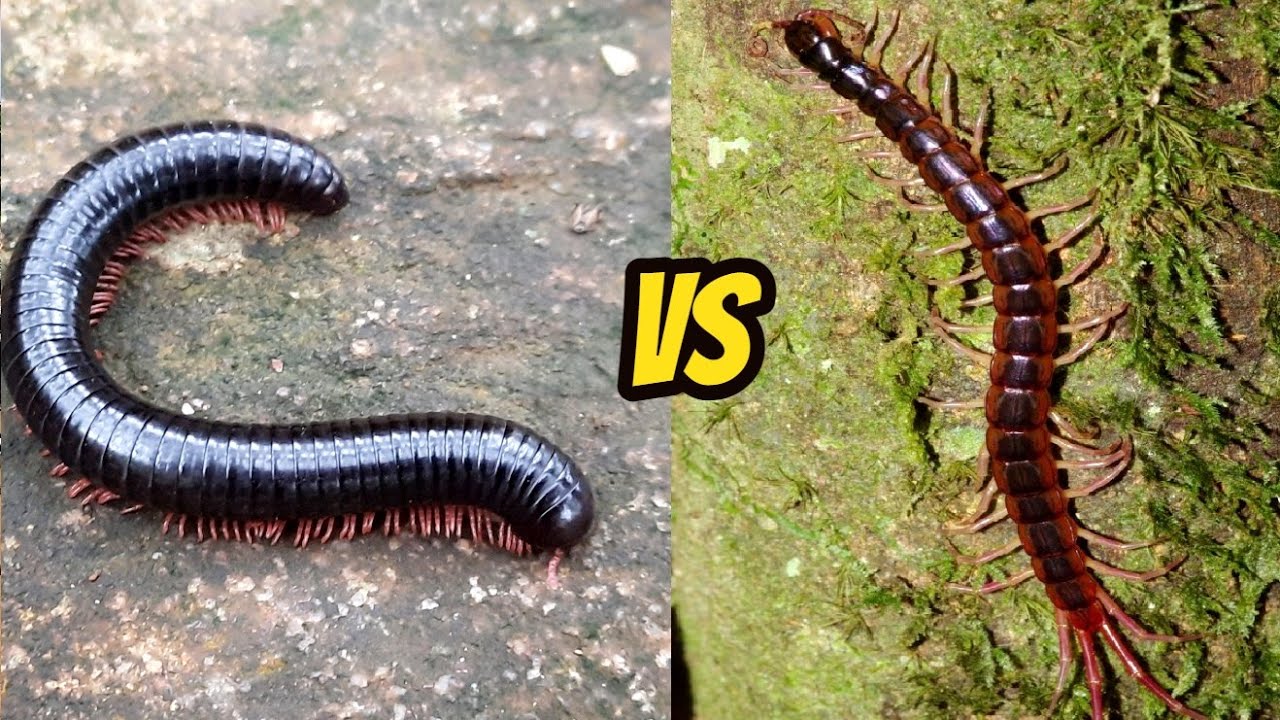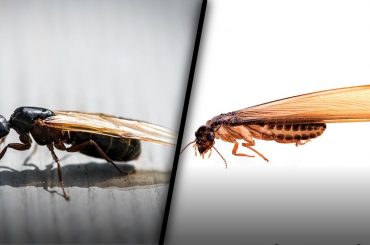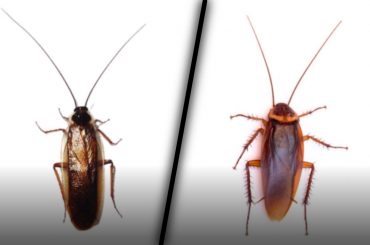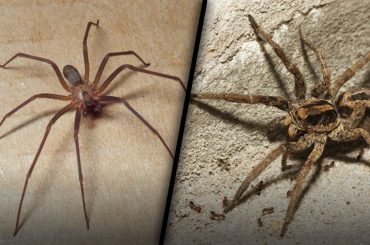Due to their similar characteristics, millipedes and centipedes are often confused. You may be surprised at how different these pests are. Discover where millipedes and centipedes can be found, if they cause any health concerns, and what you can do to get rid of them.
What Are Millipedes?
A millipede’s life cycle consists of four stages: egg, hatchling, juvenile, and adult. The eggs of female millipedes are usually small, round, and white, and they are laid in clusters on the soil or in leaf litter. Millipedes begin eating and growing quickly after hatching, molting several times along the way. Before reaching adulthood, it will molt several times more, continuing to eat and grow. Millipedes spend most of their time reproducing and eating as adults.
The size of millipedes can range from a few millimeters to about four inches. As millipedes have two pairs of legs per segment, they appear longer than centipedes. Each segment of a millipede’s body has multiple pairs of legs, so they generally have between 34 and 400 legs. It is easier for millipedes to burrow and crawl because its legs are shorter and stronger than centipedes’.
Read More Kuvasz vs Maremma
What Are Centipedes?
A centipede’s life cycle begins with the female laying several dozen eggs. Centipedes hatch from eggs with only a few segments, but they quickly eat and grow. The centipede resembles the adult in appearance once it reaches the juvenile stage. A centipede’s segments are complete when it reaches adulthood, when it stops growing and molting.
The centipede can grow up to 8 inches long, which is larger than the millipede. A giant centipede can reach a length of 12 inches. Depending on the species, centipedes have 15 to 177 legs per body segment. They are adapted for quick movements, which enables them to escape predators or capture prey quickly. Their legs are slender and longer than millipedes’. Also, centipedes have modified legs for grabbing and catching prey.
Some of their body parts can be used to hunt for food. Unlike millipedes, they have longer antennae that help them locate prey. Centipedes kill their prey with their front legs once they come into contact with it. A centipede’s diet can vary, but it is predominantly carnivorous, eating worms and other arthropods. Invertebrates and other arthropods are also consumed by some centipedes.
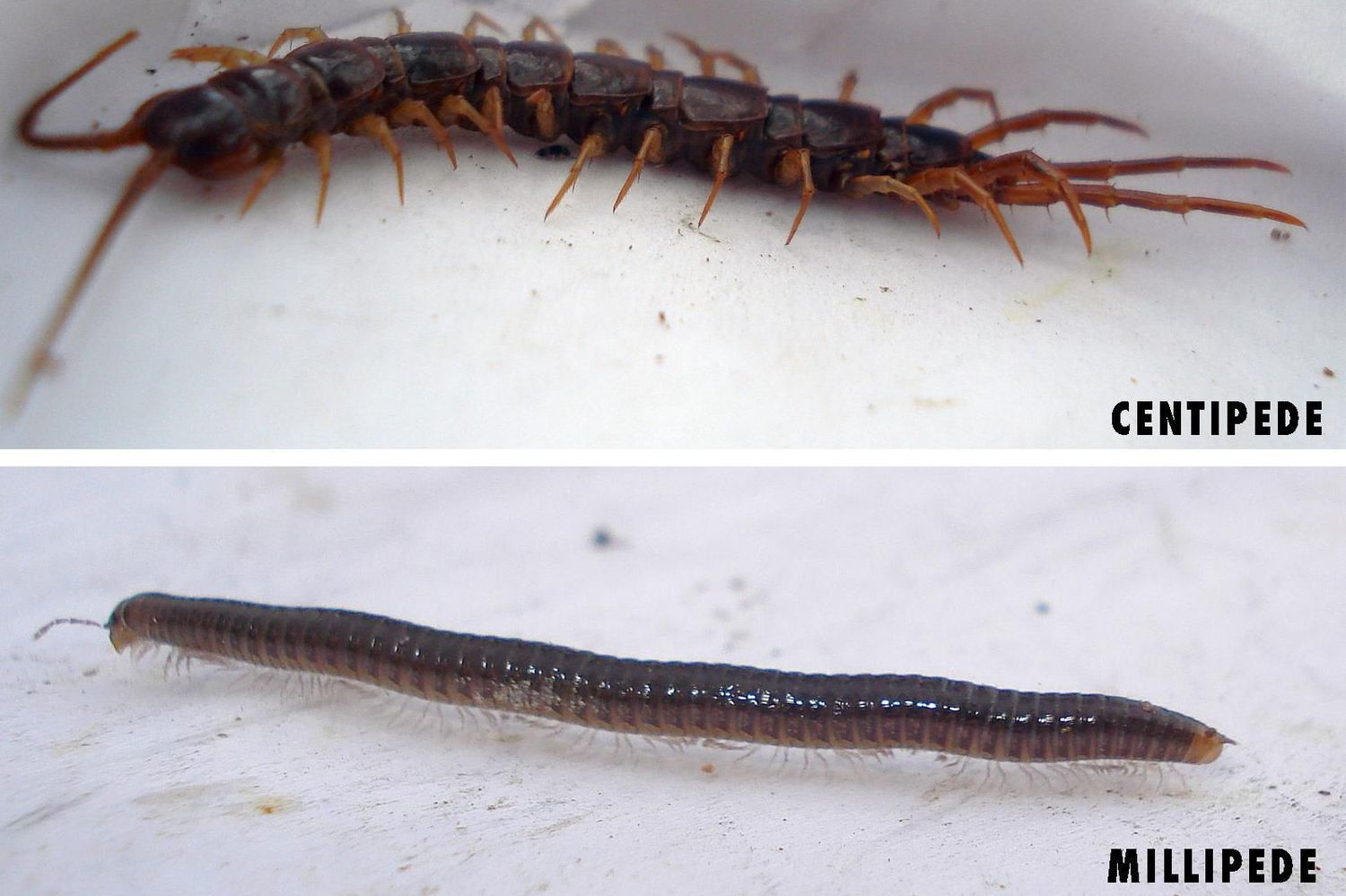
Are There Different Types of Millipedes and Centipedes?
There are thousands of different species of millipedes and centipedes. Due to their arthropod status, millipedes and centipedes are closer to lobsters and shrimp than insects. Both species lack direct reproductive organs and have segmented bodies.
The millipede. Millipedes belong to the class Diplopoda, which has many segments, each with two pairs of legs. The majority of them move slowly, decompose, and do not pose a health risk to humans.
Read More Groundhog vs Muskrat
Every millipede has two pairs of legs, regardless of its size, color, or shape. Among the most common millipede species are:
-
Millipede (Polydesmus angustus)
-
The flower millipede (Adenobolus monilicornis)
-
The giant millipede (Narceus americanus)
Polydesmus angustus grows to around 3-4 cm in length and is found in Europe. In the southeastern U.S., Anadenobolus monilicornis has a wide, flattened body shape, and grows to around 4-5 cm in length. Located in Eastern U.S. and Canada, Narceus americanus is a native species. An average size of 7-8 cm is typical for this species, with a wide, flattened body and short, thick legs.
The centipede. There are many habitats around the world where centipedes live, and they belong to the class Chilopoda.
Read More Lady Bug vs Asian Lady Beetle
Among the most well-known centipede species are:
-
The house centipede (Scutigera coleoptrata)
-
Centipedes of the desert (scolopendra heroes)
-
The stone centipede (Lithobius forficatus)
Centipedes are generally gray, around 1.5 inches long, and have long, slender legs. It is important to note, however, that the size, shape, and color of these pests can differ significantly. You are likely to see Scutigera coleoptrata in your home. Worldwide, they are fast-moving and can reach a length of 15 cm. A tropical centipede with a venomous bite, Scolopendra heroes can reach 20cm in length.
European and North African populations of Lithobius forficatus are commonly found. It can grow to be around 8-10 cm long. Centipedes are known for their potent jaws, venomous bites, and ability to regrow lost limbs.
These centipede species are all predators. They typically feed on insects, spiders, and other small arthropods, depending on their species.
Where Do Millipedes and Centipedes Live?
In damp and dark environments, such as leaf litter, soil, logs, and under rocks, millipedes and centipedes are often found. There are, however, some differences between their preferred habitats.
In many habitats where there is a lot of rain, millipedes can often be found in high-moisture climates. In addition to deserts, mountains, forests, caves, cellars, sheds, garages, under stones, and even your own bathroom, they can be found in other habitats as well, provided there is enough moisture.
It is possible for centipedes to survive in damp, dark environments, but they prefer drier environments than millipedes. The pests can be found in a variety of temperature ranges. As hunters, they need open areas so they can move and catch prey.
Read More Wood Roach vs Cockroach
Are There Health Risks From Millipedes and Centipedes?
The majority of millipedes are harmless and do not have venom. Threats often cause them to curl up into a defensive posture, but they don’t bite or sting. Centipedes, however, can bite and sting if threatened. There are some symptoms of a centipede bite, including pain, swelling, redness, fever, chills, and nausea, even though the poison isn’t typically deadly to humans.
How Do You Treat Millipede and Centipede Exposure?
A millipede bite or a bee sting may not strike you as a common occurrence like spider bites. In order to prevent infection, treat direct contact or bites as soon as possible.
The millipede. It is possible for millipedes to discharge substances that can cause irritation to your skin. The infected area can typically be soothed by applying ice, and the secretions can be removed by washing with soap and water.
Rashes can also be treated with an over-the-counter corticosteroid cream. However, avoid touching your eyes during this time to avoid eye injuries. You should seek medical attention if you get millipede secretions in your eyes.
The centipede. To prevent infection, wash the bite area with soap and water as soon as possible. You may need a tetanus shot if you are bitten by a centipede.
Read More Brown Recluse vs Wolf Spider
How Do You Get Rid of Millipedes and Centipedes?
Millipedes and centipedes are unwelcome guests in your home, but you can get rid of them both yourself.
For millipede control, follow these steps:
-
Fix leaks, improve drainage, and increase ventilation in areas where moisture is found. If you have a basement or crawl space that is particularly damp, consider doing this.
-
Get rid of organic debris like leaves and piles of leaves that could provide food sources.
-
Prevent millipedes from entering your home by sealing cracks and gaps in the foundation, especially around doors and windows.
Centipedes can be removed by following these steps:
-
By eliminating clutter, vacuuming and cleaning regularly, and applying pesticides, you can reduce their food source, which includes other arthropods, spiders, and insects.
-
Around windows, doors, and foundations, seal cracks and crevices.
-
To prevent centipedes from entering your home, replace or repair any damaged weather stripping, screens, or sealants.
You may want to contact a professional exterminator if you are having trouble getting rid of either. Ask about the extermination methods used by reputable companies. Pesticides are used by some companies, but beneficial nematodes and pheromone traps are used by others.
Professional exterminators will always provide safety instructions. Incorrect handling of pesticides can lead to serious health consequences. After the pesticide has dried, keep children and pets away from the treated areas.
In terms of professional extermination, millipedes and centipedes can only be gotten rid of if they are already present. You can prevent future infestations by reducing moisture and sealing entry points to prevent new pests from coming in.
Read More Tick vs Flea

